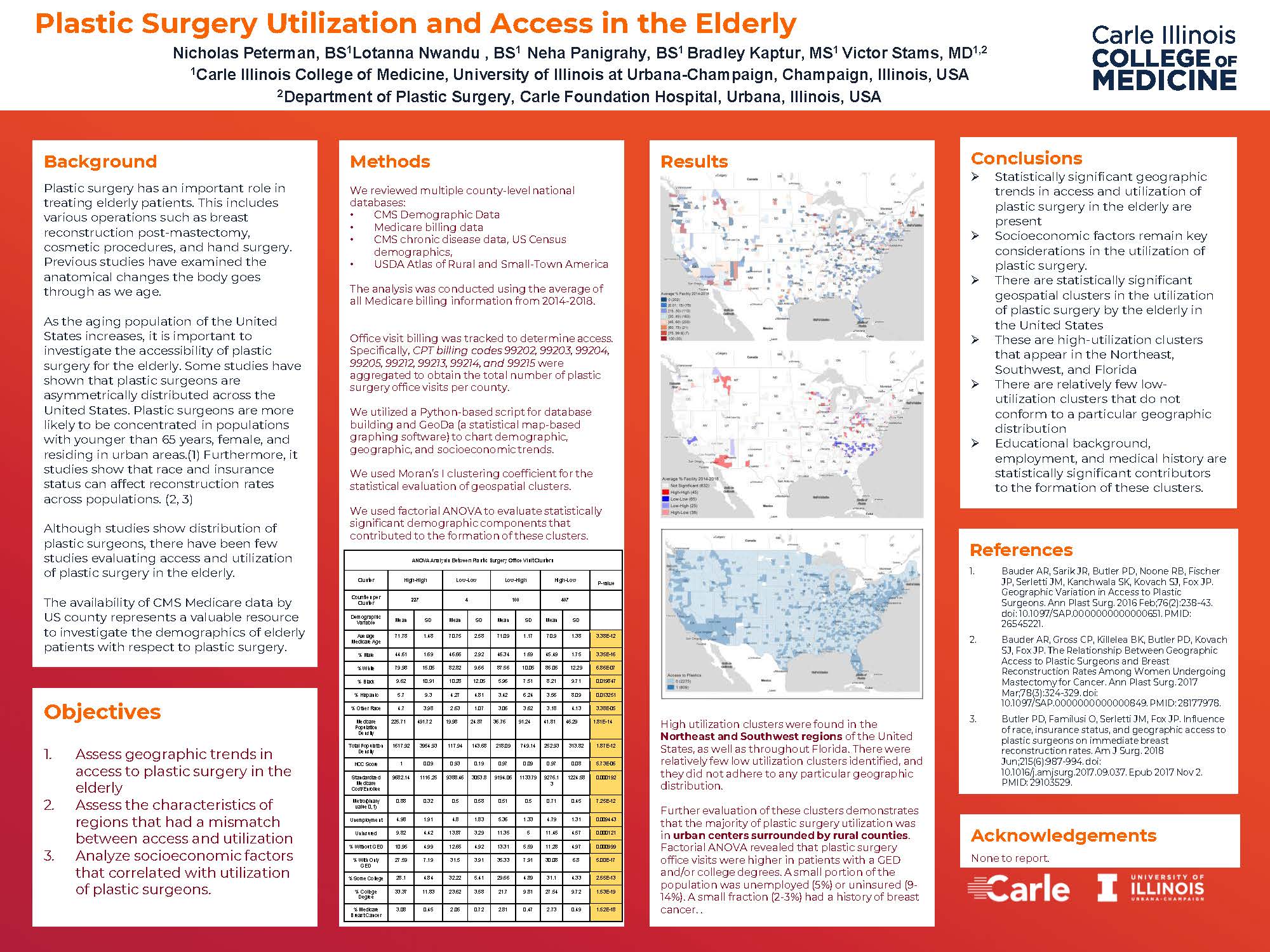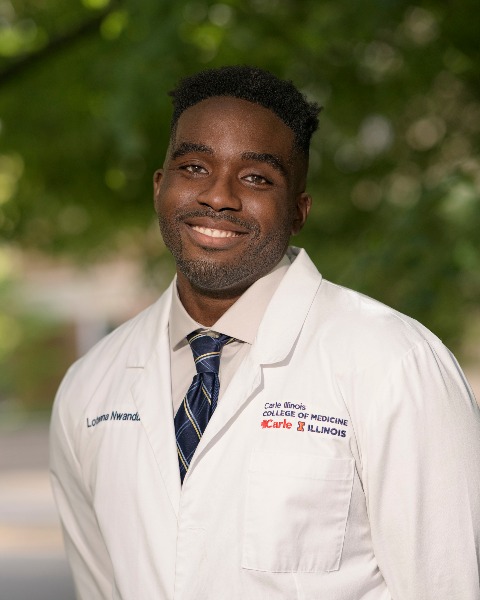
Speaker
 Lotanna Nwandu
Lotanna Nwandu
Carle Illinois College of Medicine, Champaign, IL
I am Lotanna Nwandu, a second-year medical student at the Carle Illinois College of Medicine. I have a background in biomedical engineering with an undergraduate degree from the Rose Hulman Institute of Technology, where I concentrated on biomaterials. I will be presenting: Plastic Surgery Utilization and Access in the Elderly.
Abstract
Background: Plastic surgery has an important role in treating elderly patients. This includes various operations such as breast reconstruction post-mastectomy, cosmetic procedures, and hand surgery. As the aging population of the United States increases, it is important to investigate the accessibility of plastic surgery for the elderly. Previous studies have examined the anatomical changes the body goes through as we age. To date, there have been relatively few studies evaluating access and utilization of plastic surgery in the elderly. The availability of CMS Medicare data by US county represents a valuable resource to investigate the demographics of elderly patients with respect to plastic surgery.
Objectives: The purposes of this study were to (1) assess geographic trends in access to plastic surgery in the elderly; (2) assess the characteristics of regions that had a mismatch between access and utilization; (3) analyze socioeconomic factors that correlated with utilization of plastic surgeons.
Methods: We reviewed multiple county-level national databases including CMS Demographic Data, Medicare billing data, CMS chronic disease data, US Census demographics, and the USDA Atlas of Rural and Small-Town America. The analysis was conducted using the average of all Medicare billing information from 2014-2018. Office visit billing was tracked to determine access. Specifically, CPT billing codes 99202, 99203, 99204, 99205, 99212, 99213, 99214, and 99215 were aggregated to obtain the total number of plastic surgery office visits per county. We utilized a Python-based script for database building and GeoDa (a statistical map-based graphing software) to chart demographic, geographic, and socioeconomic trends. We used Moran’s I clustering coefficient for the statistical evaluation of geospatial clusters. Finally, we used factorial ANOVA to evaluate statistically significant demographic components that contributed to the formation of these clusters.
Results: High utilization clusters were found in the Northeast and Southwest regions of the United States, as well as throughout Florida. There were relatively few low utilization clusters identified, and they did not adhere to any particular geographic distribution. Further evaluation of these clusters demonstrates that the majority of plastic surgery utilization was in urban centers surrounded by rural counties. Factorial ANOVA revealed that plastic surgery office visits were higher in patients with a GED and/or college degrees. A small portion of the population was unemployed (5%) or uninsured (9-14%). A small fraction (2-3%) had a history of breast cancer.
Conclusion: There are statistically significant geographic trends in access and utilization of plastic surgery in the elderly. Socioeconomic factors remain key considerations in the utilization of plastic surgery.
Take Home Message
There are statistically significant geospatial clusters in the utilization of plastic surgery by the elderly in the United States. These are high-utilization clusters that appear in the Northeast, Southwest, and Florida. There are relatively few low-utilization clusters that do not conform to a particular geographic distribution. Educational background, employment, and medical history are statistically significant contributors to the formation of these clusters.

